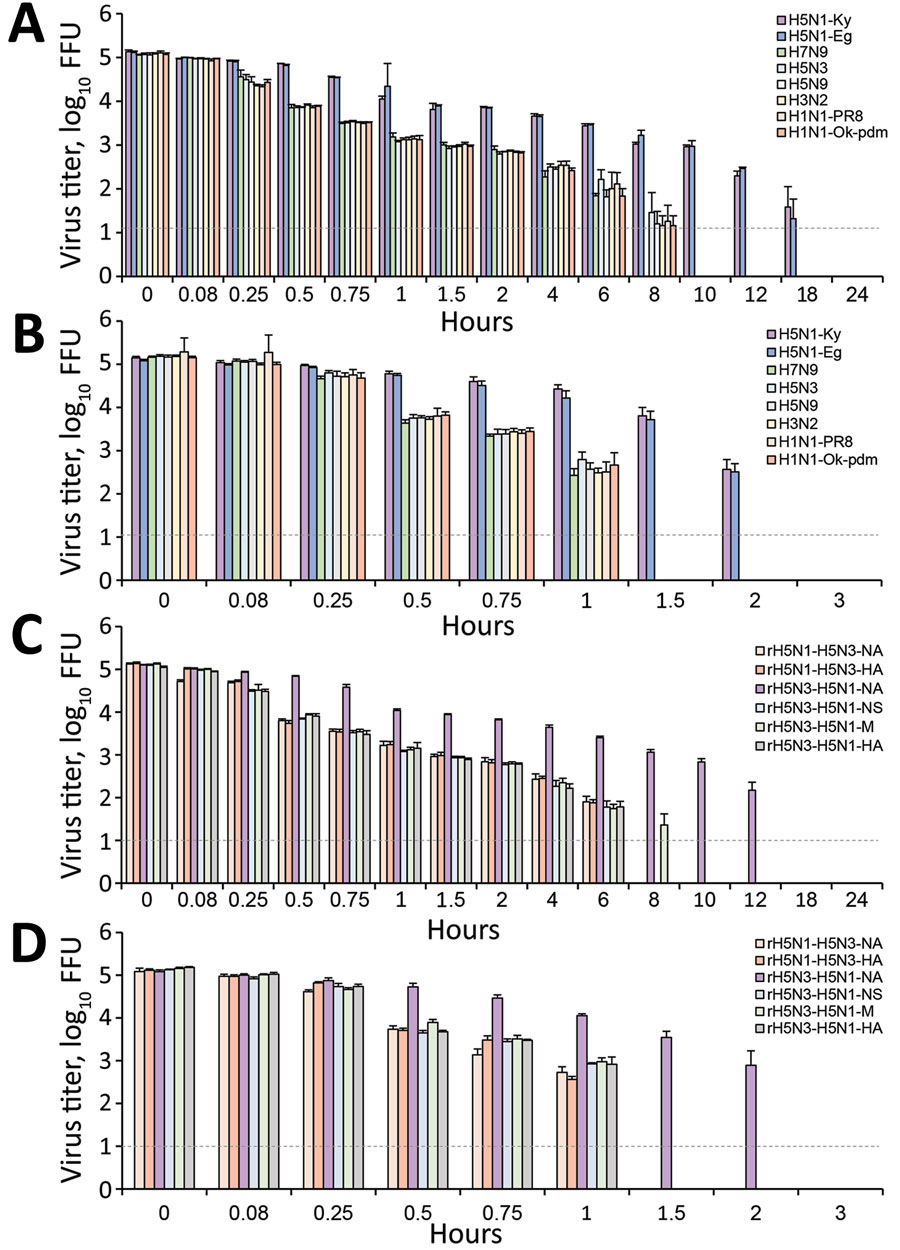Volume 28, Number 3—March 2022
Research
Higher Viral Stability and Ethanol Resistance of Avian Influenza A(H5N1) Virus on Human Skin
Figure 1

Figure 1. Decrease in titers of influenza virus on plastic (A, C) and the human skin (B, D) surfaces as a function of time. Various subtypes of influenza viruses (A, B) and recombinant viruses (C, D) were targeted. Each virus (2.0 × 105 FFUs) was mixed with 2 µL of phosphate-buffered saline and applied on each surface. Each surface was incubated in a controlled environment (temperature 25°C, humidity 45%–55%) for 0–24 h. The virus on the surface was then recovered in 1 mL of medium and titrated to calculate the titer of virus remaining on the surface. For each condition, 3 independent experiments were performed; results are expressed as mean + SD of the mean. Dotted horizontal lines represent detection limit titers; data below this limit were omitted. Data are shown for H5N1-Ky, A/crow/Kyoto/53/04 (H5N1); H5N1-Eg, A/chicken/Egypt/CL6/07 (H5N1); H7N9, A/Anhui/1/23 (H7N9); H5N3, A/duck/Hong Kong/820/80 (H5N3); H5N9, A/turkey/Ontario/7732/66 (H5N9); H3N2, a clinical strain (H3N2); H1N1-PR8, A/Puerto Rico/8/1934 (H1N1); and H1N1-Ok-pdm, A/Osaka/64/2009 (H1N1). A/crow/Kyoto/53/04 (H5N1) was recombined with the neuraminidase or hemagglutinin gene of AdDuck/Hong Kong/820/80 (H5N3), and the recombinant viruses were designated as rH5N1-H5N3-NA or rH5N1-H5N3-HA, respectively. In addition, A/Duck/Hong Kong/820/80 (H5N3) was recombined with the neuraminidase, nonstructural protein, matrix protein, or hemagglutinin gene of A/crow/Kyoto/53/04 (H5N1), and the recombinant viruses were designated as rH5N3-H5N1-NA, rH5N3-H5N1-NS, rH5N3-H5N1-M, or rH5N3-H5N1-HA. FFU, focus-forming unit.